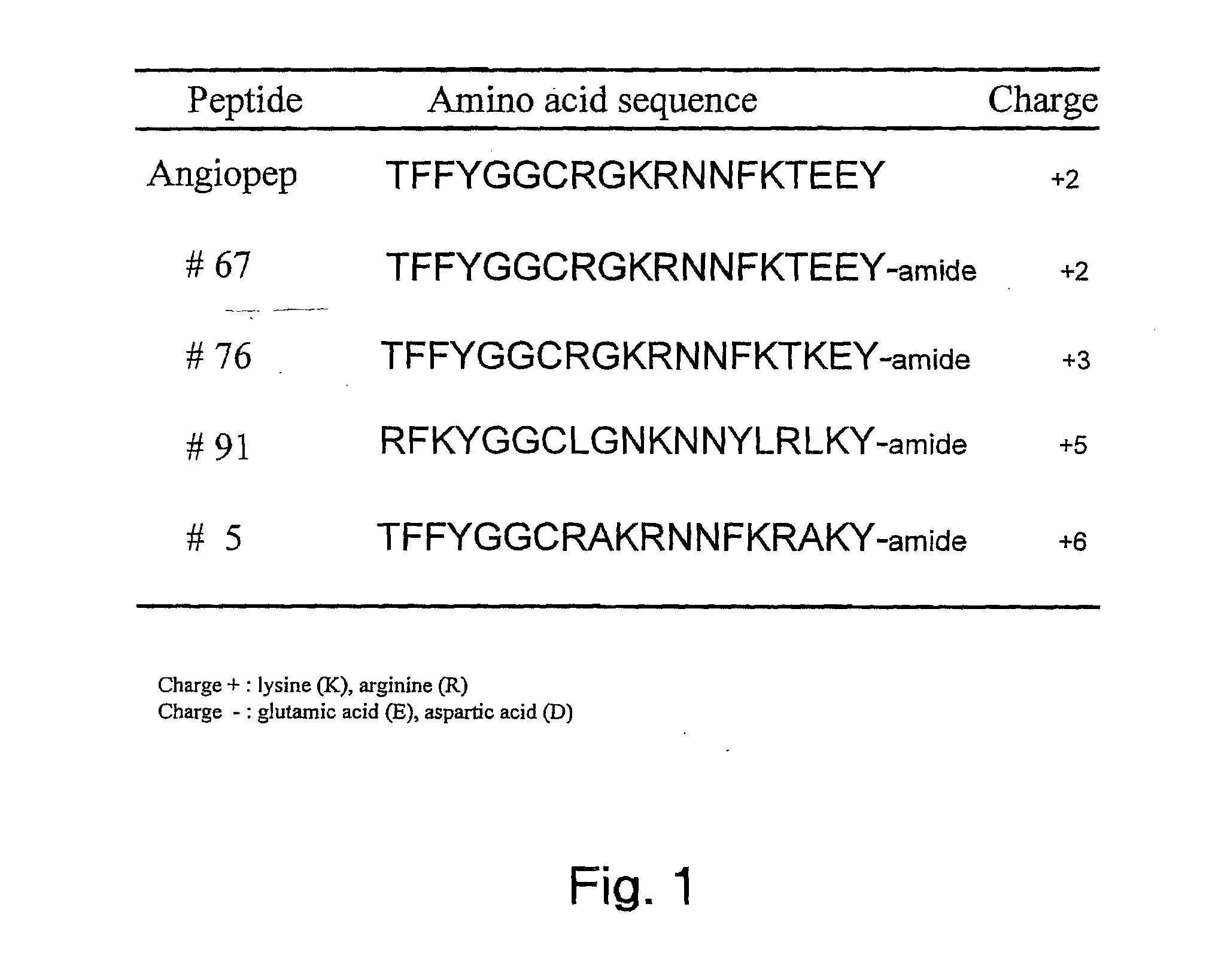Aprotinin-like polypeptides for delivering agents conjugated thereto to tissues
a technology of aprotinin-like polypeptides and tissues, which is applied in the field of polypeptides, conjugates and pharmaceutical compositions, can solve the problems of difficult to provide at a sufficiently high concentration in the target tissue or for a sufficiently long duration, and serious health problems, so as to reduce the severity of the disease, relieve the condition, and reduce the effect of symptoms
- Summary
- Abstract
- Description
- Claims
- Application Information
AI Technical Summary
Benefits of technology
Problems solved by technology
Method used
Image
Examples
example 1
Distribution and Pharmacokinetics of Conjugates
[0176]The effect of conjugation of an agent to a vector on distribution of the agent can be evaluated by administering a labeled polypeptide or conjugate to an animal and measuring distribution of the polypeptide or conjugate to organs. In one example, either 3H-Taxol (5 mg / kg) or 125I-Taxol-Angiopep-1 (TxlAn-1) (10 mg / kg, equivalent to 5 mg Taxol / kg) to mice. Similar experiments can be performed with any of Angiopep-3, Angiopep-4a, Angiopep-4b, Angiopep-5, Angiopep-6, and Angiopep-7. Here the unconjugated anticancer agent and the conjugates are injected intravenously to mice as a bolus. Tissues are collected at different times (0.25, 0.5, 1, and 4 hrs) and homogenized. To quantify the amount of 3H-Taxol, tissue homogenates are digested with tissue solubilizer, and 10 ml of liquid scintiliator was added to samples. The amount of the 125I labeled conjugate, in the different tissues is measured after TCA precipitation. Radioactivity assoc...
example 2
Angiopep-7 is Not Efficiently Transported to the Brain
[0179]Angiopep-7 is not efficiently transported across the blood-brain barrier. Measuring accumulation of Angiopep-2 and Angiopep-7 in the brain of rats 30 minutes following IV injection, Angiopep-7 was present in the brain at lower levels than either Angiopep-1 or Angiopep-2 (FIG. 13).
[0180]We have also examined accumulation of Angiopep-2 and Angiopep-7 in the brain using fluorescence microscopy after a 10 minute in situ brain perfusion. Here, 2 mM of Angiopep-2 or Angiopep-7, each conjugated to the Cy5.5 fluorescent marker, were injected into the carotid artery. The brains of the animals were then evaluated by fluorescence microcopy. In each case, the capillaries were stained with Vessel Green (FITC-lectin), the nuclei of brain cells were stained with DAPI (blue), and the Angiopeps were visualized using the Cy5.5 label (FIG. 14). From these sections, Angiopep-2 is observed to be localized within the brain, whereas Angiopep-7 is...
example 3
Angiopep-7 is Efficiently Transported to Liver, Kidney Lungs, Spleen, and Muscle
[0181]Using rats administered Angiopep-2 or Angiopep-7 conjugated to Cy5.5 as described in Example 2, the levels of Angiopep-7 and Angiopep-2 were measured in organs such as liver, kidney, and lung. In these organs, similar levels of polypeptide were observed with Angiopep-7 as compared to Angiopep-2. In view of these results, we believe that Angiopep-7 may be especially useful for delivery of agent to the liver, kidney, and lungs in applications where delivery to the brain is not desired.
[0182]To measure Angiopep-7 concentrations in animals, imaging studies of Angiopep-7 conjugated to Cy5.5 have been performed. Based on in vivo imaging studies 30 minutes following injection, accumulation of the Cy5.5 signal was observed in the kidneys, the liver, and the lungs (FIG. 15A). Ex vivo organ analysis 24 hours after injection of Angiopep-7 was performed, and compared to injection using Angiopep-2. These studie...
PUM
| Property | Measurement | Unit |
|---|---|---|
| concentration | aaaaa | aaaaa |
| stability | aaaaa | aaaaa |
| concentrations | aaaaa | aaaaa |
Abstract
Description
Claims
Application Information
 Login to View More
Login to View More - R&D
- Intellectual Property
- Life Sciences
- Materials
- Tech Scout
- Unparalleled Data Quality
- Higher Quality Content
- 60% Fewer Hallucinations
Browse by: Latest US Patents, China's latest patents, Technical Efficacy Thesaurus, Application Domain, Technology Topic, Popular Technical Reports.
© 2025 PatSnap. All rights reserved.Legal|Privacy policy|Modern Slavery Act Transparency Statement|Sitemap|About US| Contact US: help@patsnap.com



